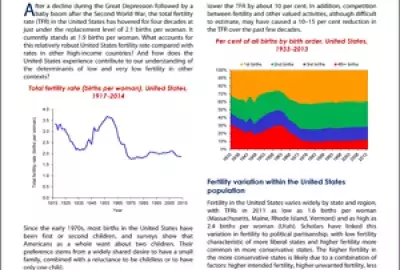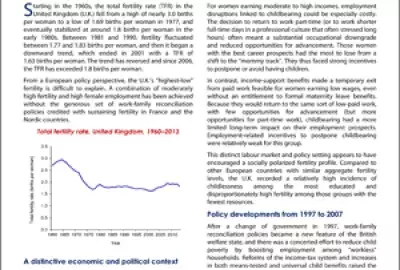Error message

Fertility in Singapore started declining steadily in the early 1960s, reaching below replacement level in 1975, then declining further to "ultra-low" levels in the early 2000s and staying at very low levels since. As of 2011, Singapore's total fertility rate (TFR) was only 1.2 births per woman, well below the level required to maintain the size of the population and to keep the age structure in balance.
Singapore has the most long-standing and comprehensive policies to encourage marriage, boost fertility and provide support to families of any country in East Asia. Yet it also has one of the lowest fertility rates in the world. What does Singapore's experience hold for other low-fertility countries in the region?
Fertility in Singapore started declining steadily in the early 1960s, reaching below replacement level in 1975, then declining further to "ultra-low" levels in the early 2000s and staying at very low levels since. As of 2011, Singapore's total fertility rate (TFR) was only 1.2 births per woman, well below the level required to maintain the size of the population and to keep the age structure in balance.
Singapore has the most long-standing and comprehensive policies to encourage marriage, boost fertility and provide support to families of any country in East Asia. Yet it also has one of the lowest fertility rates in the world. What does Singapore's experience hold for other low-fertility countries in the region?
Policy Briefs - United Nations Expert Group Meeting on Policy Responses to Low Fertility







